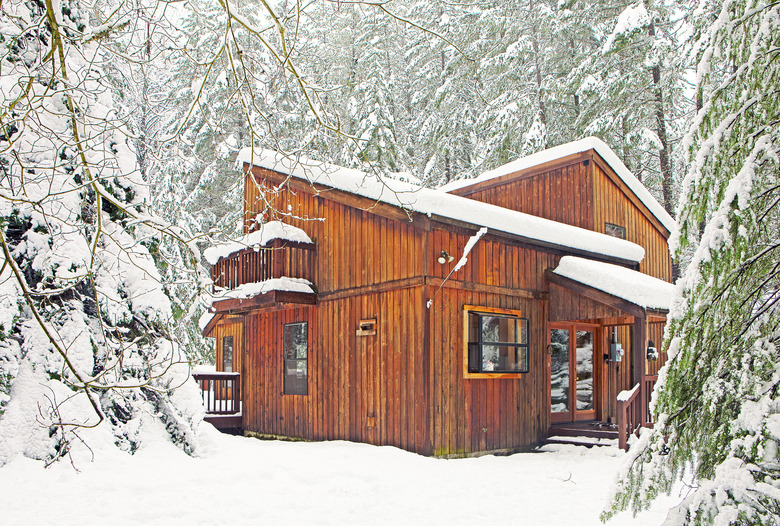How To Defrost My Well Water Pump
We may receive a commission on purchases made from links.
In many well systems, the water pump sits deep underground below the frost line. This is good news, as it means your well pump should never get cold enough to freeze. Some wells do have an above-ground pump, however, known as a jet pump. Jet pumps can freeze, as can the lines that carry water from the well to your home if they aren't buried deeply enough underground. If they do, you'll need to thaw them and then plan a way to avoid future freezes.
Find the Freeze
Find the Freeze
If you have a well, it's important to understand how and where your home's water lines run. When wells freeze, you'll discover very little or no water coming out of your taps. By turning various taps on along the waterline, you can determine where things went wrong. If water first flows to your kitchen sink and then to the bathroom, for example, a working kitchen but dry bathroom tells you the problem is between the kitchen and the bathroom.
If none of your taps work, the issue is likely at the water pressure tank or between the tank and the well. Check any and all water pipes outside your house or near your foundation where they may be exposed. Take a look in your basement or where the water comes in to your home as well. These pipes and others on exterior walls sometimes freeze even though they're inside. Sometimes frozen pipes bulge or have a patch of ice on them. If not, look for the pipe that feels colder than the others.
If you have an above-ground pump, the pump itself may have frozen. If you have a deep pump, however, it's probably fine. Like a deep pump, the well water itself should be too far underground to freeze.
Thaw the Pipe or Pump
Thaw the Pipe or Pump
Before you start thawing things out, turn on the tap closest to the frozen pipe. This relieves pressure in the plumbing system and will let you know when things thaw enough that the water is flowing again. Then use a hair dryer or heat gun to thaw the pipe. Alternatively, you can wrap the pipe in heat tape.
Your hair dryer or heat gun will work just as well on your jet pump as it will on your pipes. If you don't have electricity nearby, run an extension cord. Alternatively, you can wrap towels soaked in hot water around the pump or pipe, changing them out when they get cold. Do not heat the pipe or pump with a propane torch! This can cause the water in the pipe to boil and lead to a burst pipe.
Do Some Preventive Maintenance
Do Some Preventive Maintenance
When your well system is thawed and your pipes are flowing again, it's time to reduce the likelihood of future problems. Wrap any exposed water pipes in your system with heat tape. If you prefer not to use the electricity heat tape requires, wrap the pipes in insulation instead.
Next turn your attention to the above-ground well pump. To keep it working, you can buy or build an insulated well pump cover. The pump will generate a bit of its own heat as it runs, and this is usually enough to keep it from freezing if it's wrapped in insulation.
If your well only gives you trouble during unusually cold weather, you can keep it and your other plumbing from freezing by running a trickle of water in your faucets. This is just enough to keep the water in your system moving and prevent it from freezing. This can work well as a temporary fix if you're expecting a deep freeze overnight. If your weather gets exceedingly cold often, however, this solution works but wastes too much water to be practical as a permanent fix.
